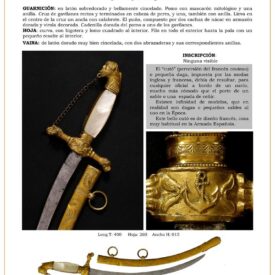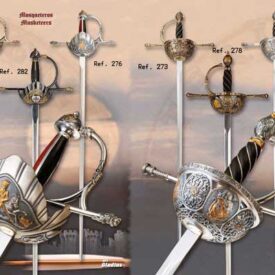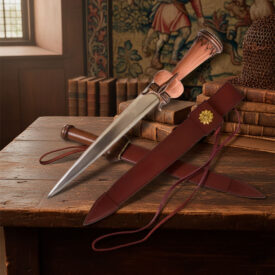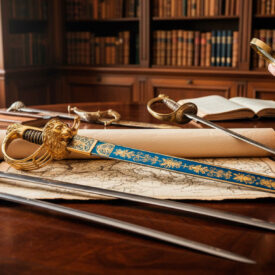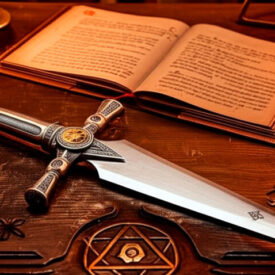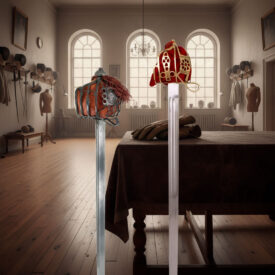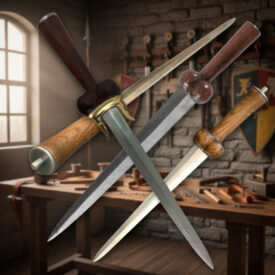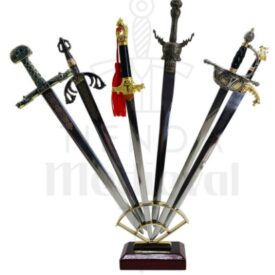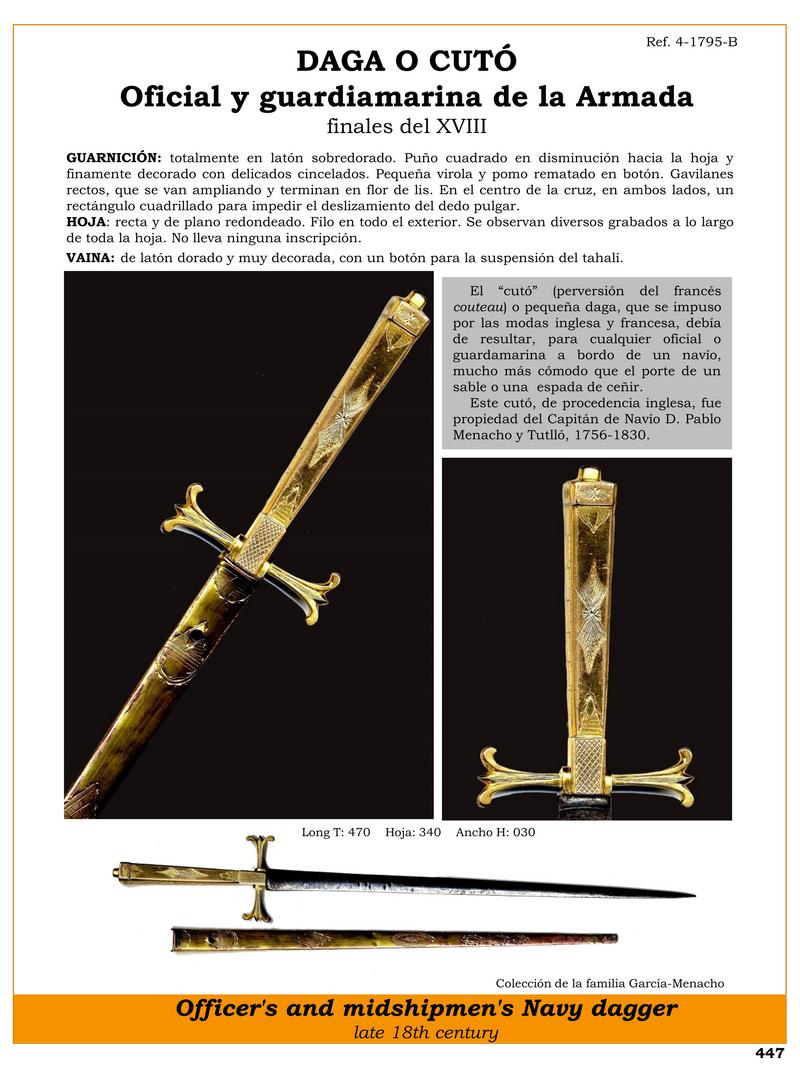
ENCYCLOPEDIA OF SPANISH SWORDS
DAGGER OR CUTÓ. Author: Vicente Toledo Momparler (sword expert)
| Reference | 4-1795-B |
|---|---|
| Name | DAGGER OR CUTÓ |
| Period | Late 18th Century |
| Guard | Completely gilded brass. Square grip tapering towards the blade, finely decorated with delicate engravings. Small ferrule and pommel ending in a button. Straight quillons that widen and terminate in a fleur-de-lis. In the center of the cross, on both sides, a checkered rectangle to prevent the thumb from slipping. |
| Blade | Straight with a rounded profile. Sharp along the entire edge. Various engravings are visible along the blade. It has no inscriptions. |
| Scabbard | Gilded brass and highly decorated, with a button for suspending from a sash. |
| Description | The “cutó” (a corruption of the French couteau) or small dagger, which became popular due to English and French fashions, must have been much more comfortable for any officer or midshipman aboard a ship than carrying a sword or sidearm. This cutó, of English origin, was the property of Captain D. Pablo Menacho y Tutlló, 1756-1830. |
| Total Length | 470 mm |
| Blade Length | 340 mm |
| Blade Width | 30 mm |
| Collection | Collection of the García-Menacho family |
.
